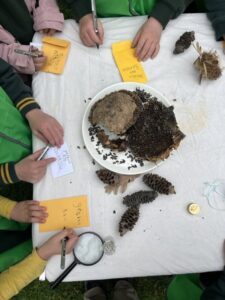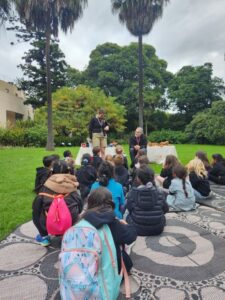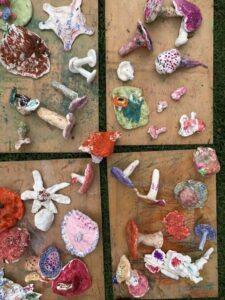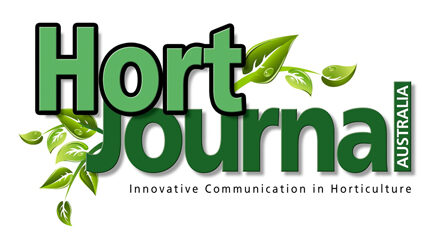
Young Botanist
Bringing science and art together for a rich learning experience
Megan Hirst and Claire Mosley
Science, education and art can be integrated in numerous ways, and this has been demonstrated often with reference to teaching methods, curriculum, and school-based projects. Applying science and art to teaching requires a positive, supportive environment that assists schools by developing a rich learning experience as well as personalising a student’s experience through meaningful and engaging content. The benefits of integrating science and art in education helps students understand science through their creative activities, and by doing so, gaining a deeper understanding of what science is.
Young Botanist

The Royal Botanic Gardens Victoria (RBGV) Young Botanist program takes a unique approach in which the Education Facilitator (Claire Mosley) involves a scientist and an artist in the development and delivery of the program. Together they consult on the content and participate in the one-off program delivery to a student cohort.
This creates a novel program every time it is run as the lineup of experts (scientists and artists) changes each time, and in doing so, the content and delivery change. For example, pairing a research scientist with a cutting-edge Melbourne artist/writer (e.g., Caoife Power) to deliver a unique Young Botanist program. The benefits of including experts in their field (within the realms of science and art) creates a unique program every time, and through the facilitation of the education facilitator Claire Mosley, ensures each program makes a rich outdoor learning experience within the Gardens environment. Bringing colleagues together from different sections of an organisation can be challenging due to their distinct roles and reporting responsibilities. However, let’s consider the expertise available within a Botanic Garden. It makes sense to draw upon staff from these different areas with the goal of creating a robust program that incorporates pedagogical rationale with current scientific methods/knowledge, and bringing it together using the creative bonding of art.

The art of science communication can be presented here by combining scientific knowledge with creative activity. We can think of the artist as the conduit to bring science and education together, not to make science more appealing, but to engage and seal the science curriculum into one deeper pathway toward understanding what science is. This deeper relationship between art and science makes the inclusion of art into the science curriculum highly valuable. The benefits go beyond the student/school culture, and expand to include the educator, scientist, and artist involved. As noted, science and art share common ground. Through an education program such as Young Botanist, this ground is acknowledged and communicated to the younger generation so they can freely enter. As you can see in Ione of the images, a group of six-year-olds have created fungi out of clay. After looking at fungi identification charts and spending time chatting with Mycologist Dr Tom May, students were able to create their very own shapes. These art pieces demonstrate the value of the program. By spending time with a mycologist, they show their understanding through artistic expression using a diversity of shapes, textures and rich colours. The shapes of the fungi the students have created go far beyond a traditional red and white toadstool!
The Young Botanist program contributes to a positive school culture. Colleagues from different areas within the RBGV (e.g., Research and Horticulture) can work together on a novel program, building a positive workplace culture. An RBGV colleague (expert/scientist) is given the opportunity to provide input into the program creating a positive personal experience for the individual.
Acknowledgements
Claire acknowledges the following people for their contribution and participation in The Young Botanist program; RBGV colleagues Jenni Bell, Jack Dewhurst, Meg Hirst, Tom May, Camille Truong, and Lenka Vanderboom. And to fellow artists Trace Balla, Caoife Power, Sofia Sabbagh and Hannah Vrijenhoek. This free program is funded by Department of Education’s Victorian Challenge and Enrichment Series.
For further information on the Young Botanist program see link https://www.rbg.vic.gov.au/learn/victorian-challenge-and-enrichment-series/young-botanists/
Megan Hirst and Claire Mosley
Royal Botanic Gardens Victoria (RBGV)
